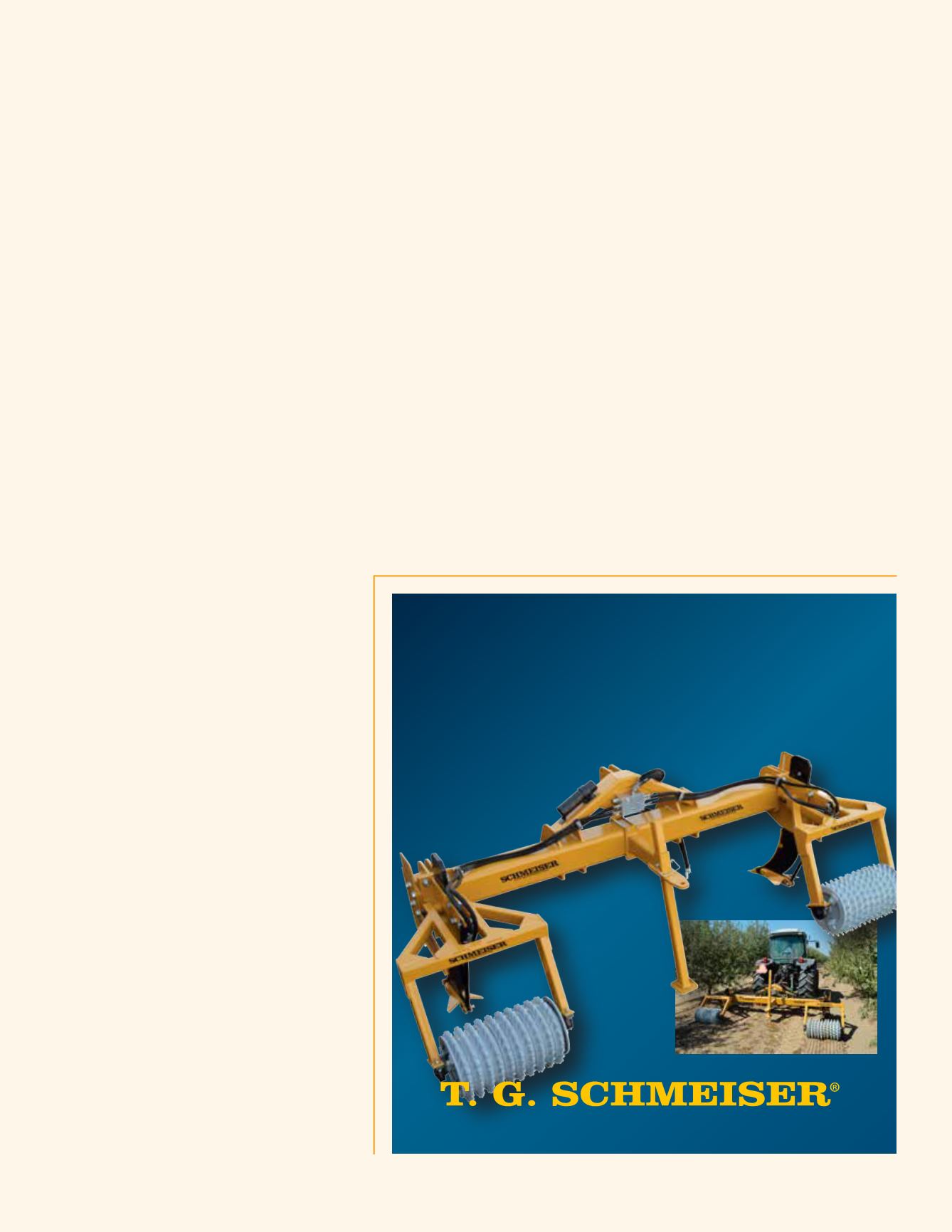
JANUARY | FEBRUARY 2017
Almond Facts
39
Cladosporium is a very common fungus that overwinters
as mycelium in twig lesions. It resumes growth in spring
producing spores that spread to fruit, shoots and leaves. The
infection eventually leads to defoliation.
“The problem with this disease is that symptoms do not appear
right away,” Duncan warns. “Germination of the spores takes
up to two months, so by the time you see the lesions it is too
late to treat for it. Therefore, prevention is the key.”
Fungicides are the best preventive treatment for scab and
the best timing for treatment is two to five weeks after petal
fall – late March or first of April. Also, a dormant application
of copper and oil or chlorothalonil and oil delays the onset of
symptoms. While dormant treatment does not eliminate the
disease, it reduces and delays the formation of spores.
Rust
(Tranzschelia discolor)
Rust infections were widespread in 2016, said Duncan. He
explained that rust overwinters on leaves. Rust spores on
leaves attached to trees remain viable for five months while
spores on leaves on the ground are viable for one month. To
reduce rust, remove leaves from the trees. A high rate of zinc
with urea applied in October will burn
the leaves and cause them to fall off the
tree, while also providing the trees with
nutrition and nitrogen, he said.
High humidity and calm wind promotes
rust. It occurs later than scab, five weeks
after petal fall or even as late as May.
For prevention, Duncan recommended
a spray in the middle of April for scab
and rust, if your orchard has a history of
moderate occurrences of those diseases.
Or one spray in early April and if rains
continue like last year, add a second spray
in the middle or the end of April. Duncan
recommends using each fungicide class
only once per season or rotate between
pre-mixtures containing different classes.
Hull Rot –
caused by two different fungi
(Rhizopus stolonifer - bread mold) and
(Monilinia fructicola – brown rot fungus)
Rhizopus is present in the soil. It produces
fumaric acid which causes shoot dieback.
Monilinia causes blossom blight and
brown rot.
Controlling hull rot is best accomplished by cultural
controls, said Duncan. Heavy irrigation and high nitrogen
inputs promote hull rot, he explained. Therefore, to
minimize hull rot, employ regulated deficit irrigation,
beginning no later than first blank split. At that point,
simply cut water applications in half. Continue for about
three weeks, then just before harvest return to normal
applications to bring the trees back up to normal, then dry
back down for harvest. The idea is to speed up the hull
split process to reduce the odds of a hull rot spore drifting
down to the splitting hull.
Fungicide sprays can provide about 50 percent control of
hull rot. For the brown rot fungus, application is one month
before hull split – early to mid-June. To treat for Rhizopus,
application is right at hull split, says Duncan. It can be
applied with the navel orangeworm spray.
For information on identification and control of diseases in
almonds, Duncan recommended “Efficacy and Timing of
Fungicides, Bactericides, and Biologicals for Deciduous Tree
Fruit, Nut, Strawberry, and Vine Crops – 2015” which is available
at the Statewide IPM Program website:


